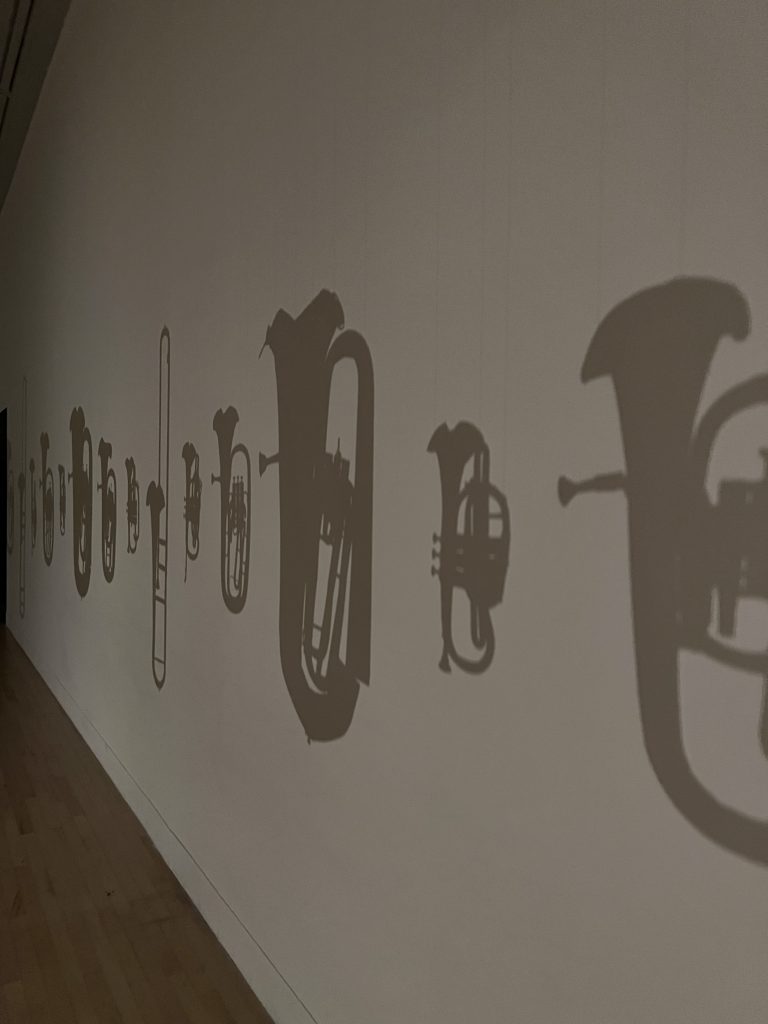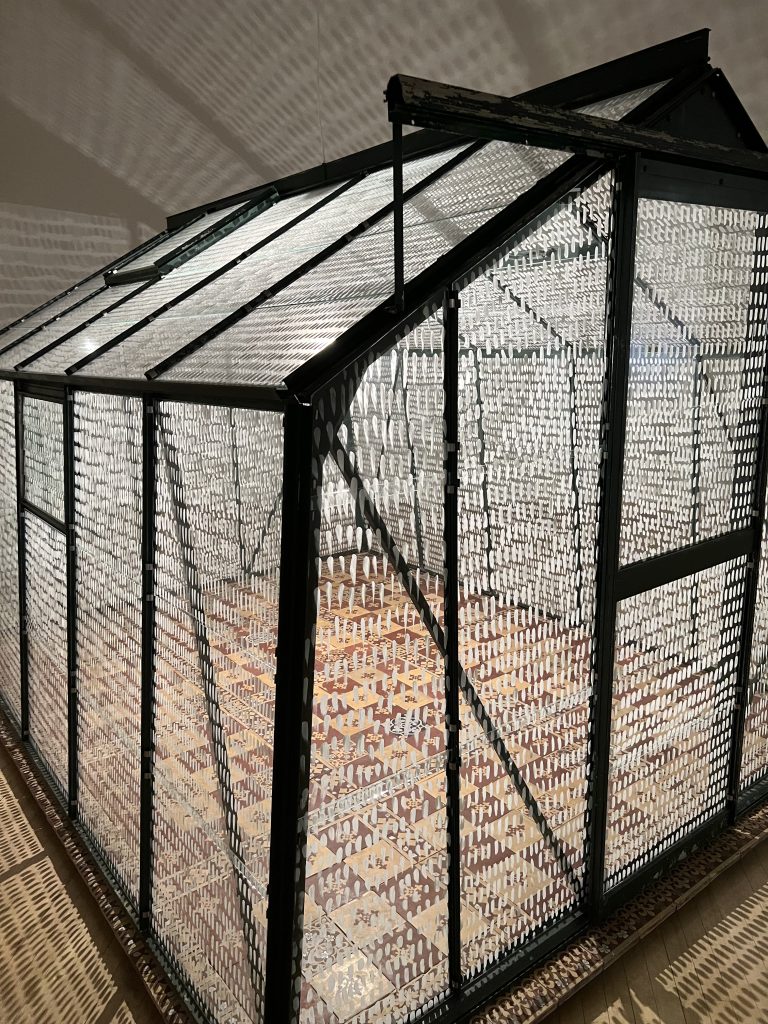
This week I visited the exhibition of Cornelia Parker, a contemporary British visual artist. She is good at sculpture and large-scale installation works, especially immersive installations. Driven by curiosity, she reprogrammed household items to question our relationship with the world. She used transformation, playfulness and storytelling to participate in important issues of our age, whether violence, ecology or human rights. Like to bloom creativity in the struggle with authority.
Parker’s art is about destruction, resurrection and reconstruction. In order to demonstrate the importance of the process, she often uses some seemingly violent technologies to destroy objects, such as explosion, flattening, cutting and burning, and then carefully put together the remains of these objects. Through these behaviors, she became an active participant in the development of the story while physically changing objects.

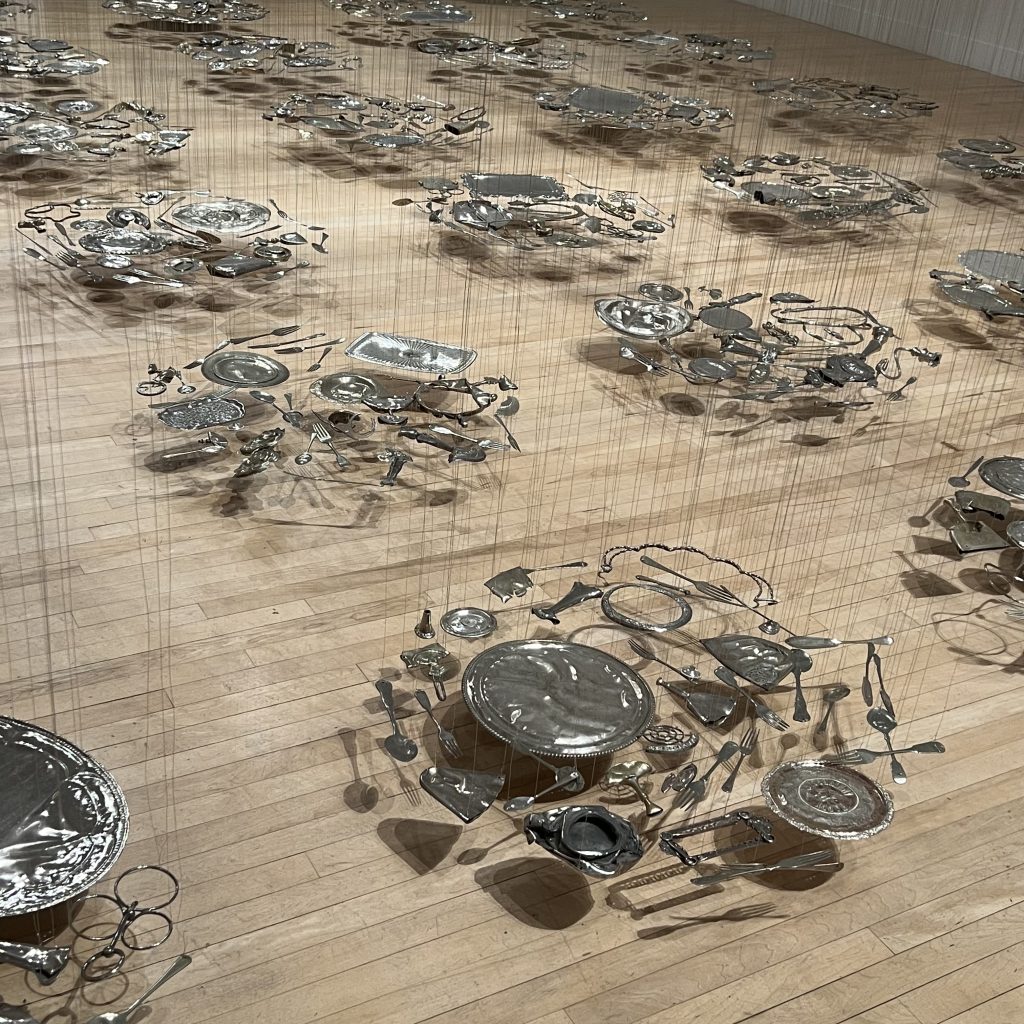
The flattened old silverware and musical instruments are hung up with a special sense of poetry and story. In addition to the expression of objects, her works also reflect on contemporary British society and politics.
Attracted by broken things. Whether the rebuilt artifacts provide another perspective or way of looking at things.
The most important work in the exhibition, “Cold Dark Matter” interested me. The author thinks that we are watching explosions, action movies, documentaries, news and endless conflict reports every day. She wants to create a real explosion, so she took the war explosion as inspiration to show the picture of the moment of explosion, and solidified time in the light and shadow: the central light point extends outward, and the daily trivial objects: clothes Cups, toys, household appliances, etc., the outermost layer is the wood pieces falling in the air. The wall of the exhibition hall reflects the shadow of the works, and the visitors seem to be in an exploding room. The whole work is full of dynamic sense, and you can strongly feel the scene that everything is about to disappear at the moment of explosion.
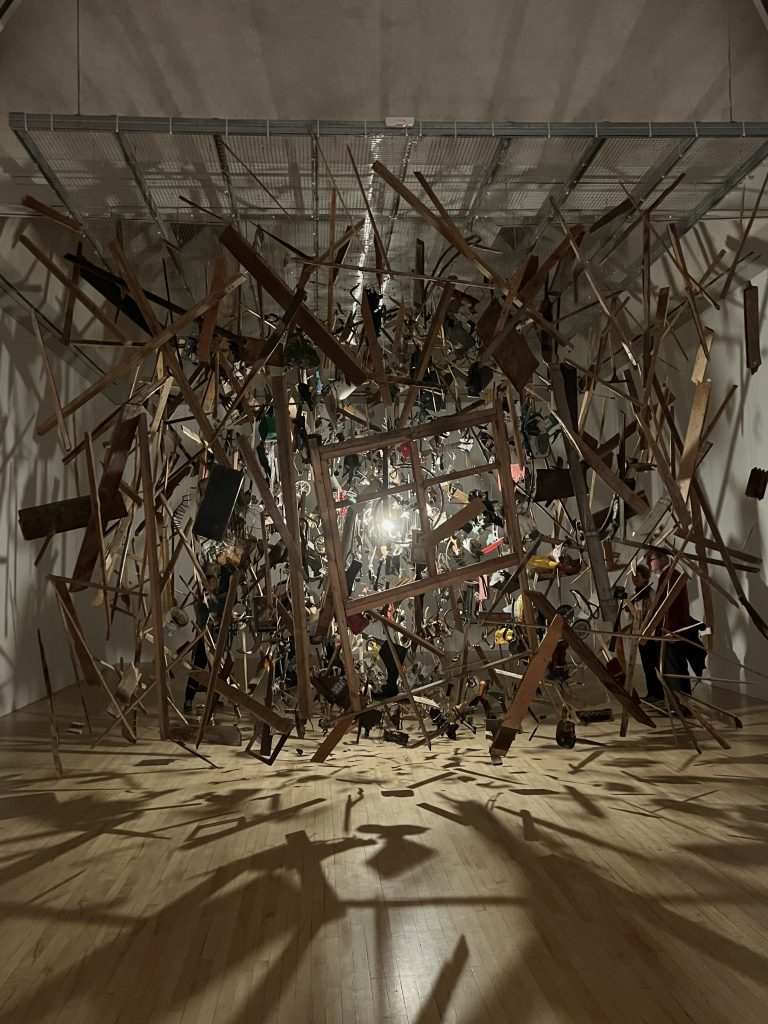
Visitors will find that the space between objects is an important part of the work, and the boundaries between the work and the audience are blurred. These objects cast dramatic shadows on the wall, adding another dimension and level of meaning to the work. Although these objects destroyed by the explosion are “too dead”, once they are suspended and in the air, they will change and regenerate vitality, rather than cause fear. I also have to lament her patience and carefulness.
I like the pictures of broken objects and interlaced light and shadow very much. The exhibition can also make visitors join in, and our shadows become part of the picture.
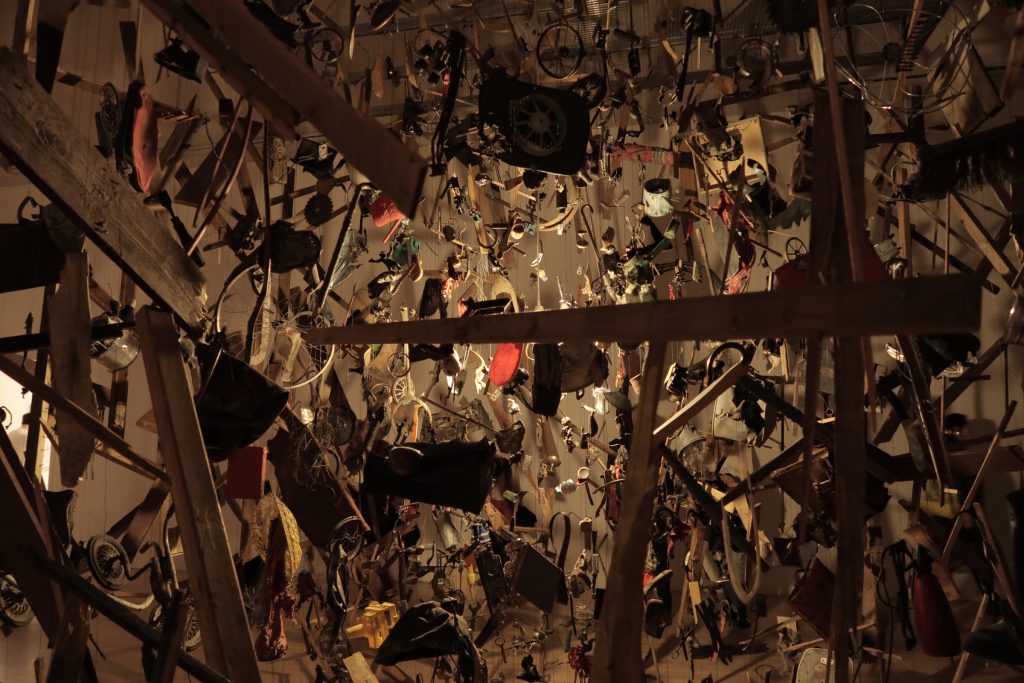
It was originally planned that she wanted to create a sound device in this exhibition hall. She thought of filling it with sound, but finally she used a flattering method, which also evolved into the idea of a silent military band. All musical instruments were squashed, as if their last breath had been squeezed out. The squashed musical instruments were suspended around the central bulb, and the shadow surrounded the wall. The shadows projected by the visitors and instruments filled the whole scene.
When visitors enter the exhibition hall and see these instruments, they will automatically associate their sounds with them, and they will also be their last audience to help them complete the final performance.

Silent band, light and shadow on the wall are also part of the work.
